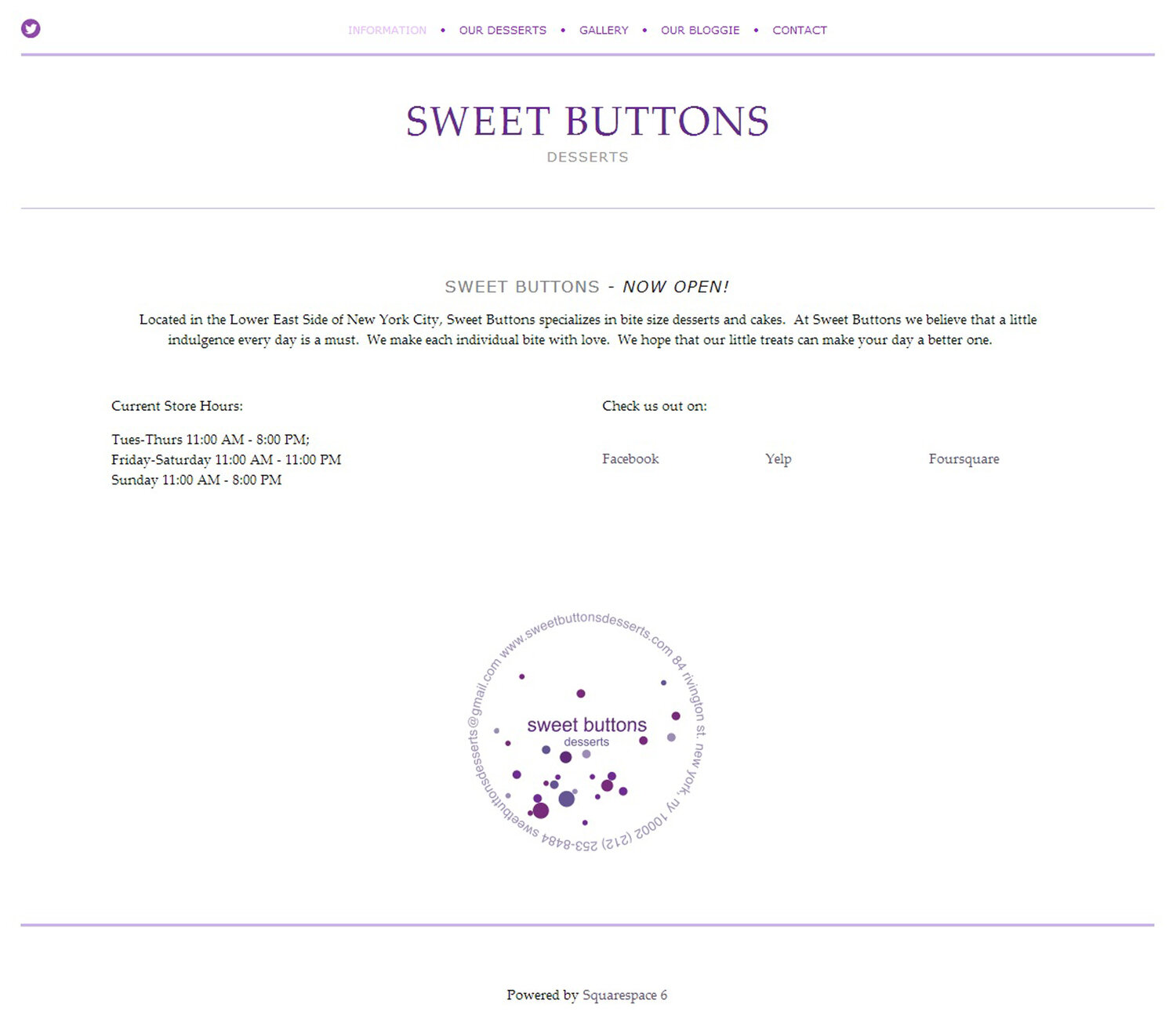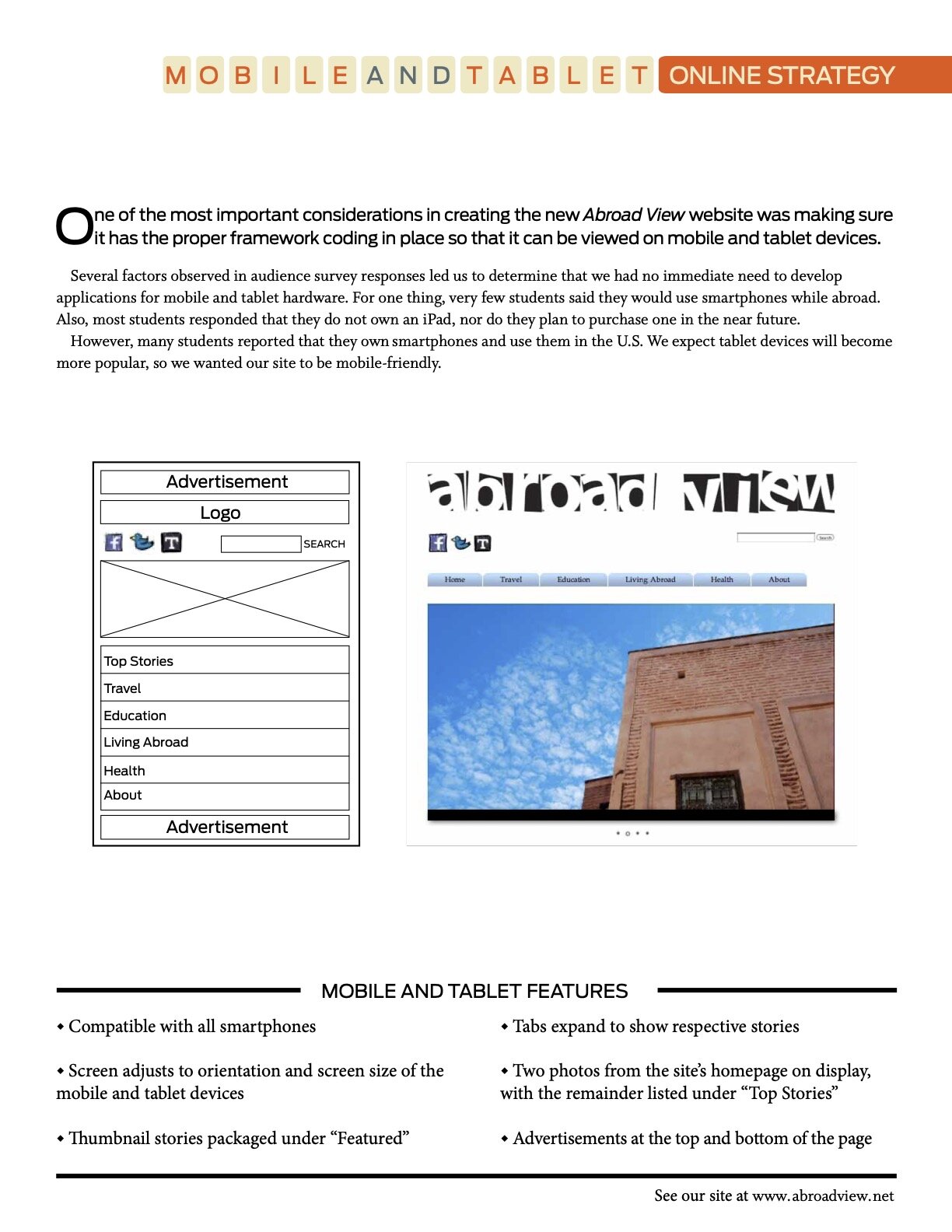Sweet Buttons Desserts: UI DESIGN
In 2014, I was called on to redesign the website of Sweet Buttons, a New York-based brick-and-mortar cupcake and dessert shop. The original site, which co-owner and head baker Karen Ng pieced together, had the basic building blocks of a company homepage, but was not particularly attractive. In addition, featured photos lacked in quality and failed to capture the charm and quirky presentation of her products and her stores.
BEFORE:
After several conversations with Karen, I was able to identify her top priorities for the new design: a clean, minimalist look that highlighted her delightful creations as well as played up the colors of white and purple, which were prevalent in her in-store branding.
AFTER
ABROAD VIEW Magazine: UX design
As part of my final Capstone Project at the Medill School of Journalism, Media, Integrated Marketing Communications, my graduate school colleagues and I were hired to redesign and relaunch Abroad View Magazine, a print travel magazine for college students. Founder Sherry Schwarz was particularly interested in launching a brand-new website.
I led the product development team for this effort. We handled user research, UX/UI design, and front-end web development to custom-build the online magazine from scratch. Our focus was on building an online magazine that offered readers an interactive experience, with engaging visual features such as photo slideshows, videos, animated graphics, and quizzes. .
All of our decisions while building the website were guided by an understanding of our audience. We knew that Abroad View would be most successful as an online publication because of existing studies that indicated our target audience’s preference to get information online and from our own research. We found that study abroad offices are not the informational hubs they once were—instead, many advisers are directing students to their programs’ websites and other online resources as the advisees prepare for their trips.
We also consulted our audience as we determined the layout and design of the site. We wanted to be sure that navigating the website would be intuitive to maximize the relationship between Abroad View and our readers.
To accomplish this, we applied human-centered design principles throughout the development process. From plotting out wireframes and information architecture, to building high- and low-fidelity (paper) prototypes and conducting A/B user testing, we asked for and implemented feedback from potential end users. These surveys and interviews gave us a valuable and reliable foundation for establishing our digital strategy and building our online product.






